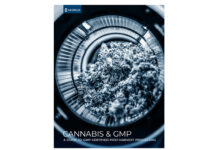This column began with a declaration that every business in the cannabis industry can benefit from a little PR. As a reminder, we define PR as “the process of developing key messages, managing clients’ reputations, and contributing to content development and storytelling, with the intention of generating media coverage—a story, review, article or even just a mention.”
Now, we want to talk about some of the important tools to support the PR process and help you connect with the media. One way to share company highlights and story ideas with the media—and a must-have in your PR toolkit—is a well-written press release.
There are a lot of people who will tell you the press release is extinct. They believe technology has made press releases obsolete, that PR has changed and moved beyond press releases. Just because technology has advanced doesn’t mean reliable resources and effective “old school” tools vanish. Press releases have been around for a long time, supposedly since 1906 when there was a Pennsylvania Railroad train wreck and an employee issued the news to media in a very succinct document—a press release. Since that first press release, they surprisingly haven’t changed significantly. While there have been many innovations in the communications field, press releases are still a mainstay of company communications and serve an excellent purpose.
A press release is also known as a news release, and this is a critical point to keep in mind; it’s a tool for sharing news. We will dig deeper into what is considered newsworthy in another column, but we want to start encouraging a discerning mindset of how to evaluate news at your company.
The top events and occasions that should trigger issuing a press release:
- Launching a new company, product, or upgrade
- Introducing a rebrand
- Building/opening a new facility
- Sharing earnings/financials
- Announcing new hires or promotions
- Creating new partnerships, mergers, or acquisitions
- Receiving an award
- Acquiring a patent
Get to the Point—The 5 Ws
When you have news to announce, you may be overwhelmed and stare at your computer screen trying to figure what exactly you should say. Those closest to the information sometimes have a hard time being objective about what is truly important and timely. That is why we have the “5 Ws”—Who, What, When, Where and Why. Your busy media contacts need you to get to the point. In fact, this is what journalists and reporters are taught to focus on when writing an article, so by providing them with the 5 Ws, you’re actually adding two more Ws—Win-Win!
- Who – The person, including full names and titles, or company announcing the news.
- What – The actual news or announcement.
- When – The date this is happening, and time if relevant.
- Where – The city or locale of the news, including areas affected.
- Why – The purpose and impetus of the news—this is where the really interesting aspects of the story are developed.
Now that you have determined the important information to share, the 5 Ws, it is time to organize that information. Press releases have a formulaic style to present details in an easy to read format. While this may seem very formal in the more casual social world, this familiar layout makes the article writing process efficient for the media. They know exactly where to find the information they are looking for.
The Anatomy of a Press Release
FOR IMMEDIATE RELEASE
These words, in all caps, at the top of your press release indicate to media that this is a press release that contains information that you are granting them permission to announce.
Headline
The headline is critical. It can make the difference between your information being read or discarded. Media are so bombarded with emails they must decide in split seconds whether to open a press release or not. (Note: Often you send the headline as the subject line of your email). Therefore, it’s important to capture their attention immediately with a high-impact headline. Think catchy, memorable, interesting, funny, or powerful, and of course informative and to the point. Be sure to include your company name in the headline, and consider a sub-headline to emphasize secondary, less critical, but also interesting and important information.
Dateline
This is located at the start of the lead paragraph and consists of the city and state where the news is originating, as well as the date.
Lead Paragraph
This important introductory paragraph should succinctly summarize all the key information being announced. It does not contain every detail, but it should provide enough to tell the basic news. Like the headline, it may be all that is read by the busy media. It may make or break whether they want to pursue your story or not, so make it good!
Body Paragraphs
The paragraphs that follow the lead paragraph fill in salient details, facts and figures, dates, technical data, and other critical information. This should be strictly factual, and of course accurate. Avoid opinions or hyperbole.
The body paragraphs may also include interesting quotes from members of the company, such as a statement from the CEO or CFO, or from the grower or chief scientist, and, unlike the other paragraphs in the press release, can include opinions and emotion.
Speaking of quotes, this is the one place where your company spokesperson can speak in the first person (I/we). Otherwise, the entire press release should be written in the third person (it/they/she/he)—and be sure to avoid using the second person (you).
Finally, conclude this section with a call to action, such as directing the reader to visit your website or stop by a new dispensary location. It should be clear, straightforward and not salesy—simply informative.
Boilerplate
This is a short paragraph, usually entitled “About” plus the name of your company. It includes the basic information about your company—its operations, products/services, purpose, mission, and organization. Include your location as well as your website URL. The boilerplate can be refreshed from time to time as your company grows, but usually is used over and over at the end of every press release you issue.
###
No, we’re not hashtag-happy here! These three marks together (dating way back to when hashtags were called pound signs) indicate to a journalist that this is the end of your content.
Contact Information
The name of the person you’d like the media to contact and either their phone number or their email address should be included at the bottom of the press release. This does not have to be the company spokesperson. This can be a PR person, marketing person, etc.—whomever you want to field the calls coming in from media. That person can then screen calls, provide additional information and materials to the media, and facilitate a call or interview with the company spokesperson or executive as needed.
Now you know the type of information to include in a press release and how to organize it! We want to offer just a few more thoughts to enhance your press release writing skills.
8 tips for creating a professional press release:
- Proofread to ensure correct grammar and punctuation.
- Don’t use industry jargon. Technical terms are ok, if speaking to industry media.
- Include photography, video, or sharable quotes to generate interest.
- Include hyperlinks and double check that they are functioning properly.
- When in doubt, refer to the AP Stylebook for proper journalistic details such as common abbreviations and writing in correct journalistic style.
- Keep your press release between 400 and 600 words (400-500 is best).
- Avoid selling, advertising, or using hyperbole.
- Ensure that your press release is accurate and newsworthy.
While the press release is a tried and true method for communicating to the media, it is just a starting point. PR, like all aspects of sales and marketing, requires a multifaceted effort. Relationships with the media need to be nurtured and developed over time. Even if the information you share in your press release doesn’t get published, it has served a purpose. It has brought your company to the media’s attention and may be the launching pad you need to become a reliable resource for your favorite media outlet.













